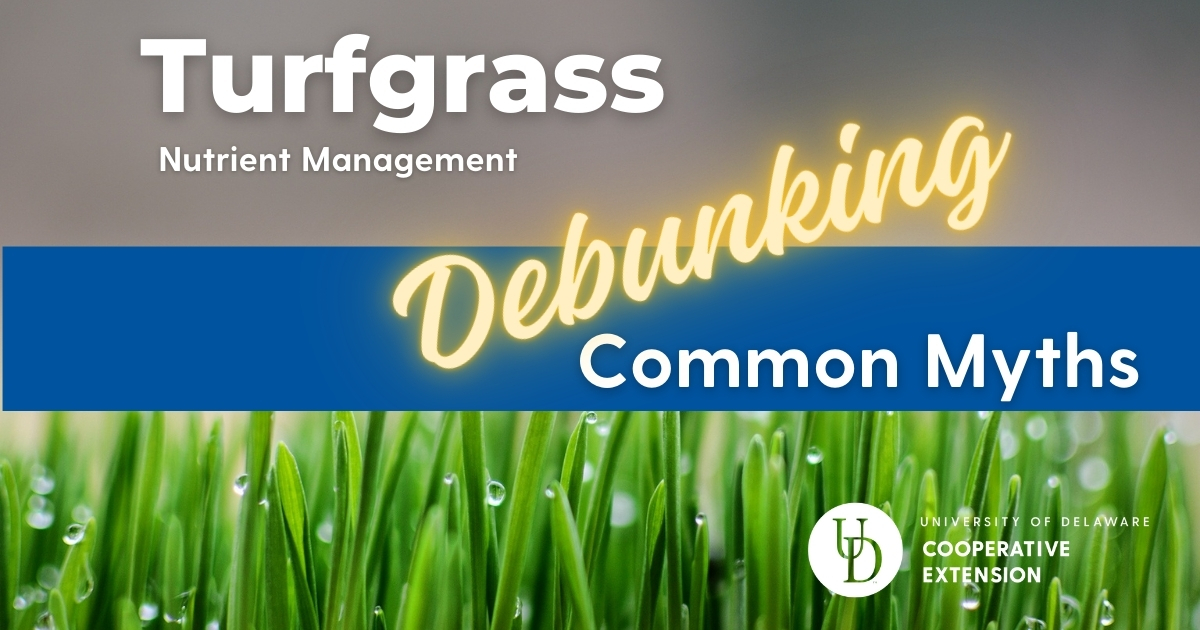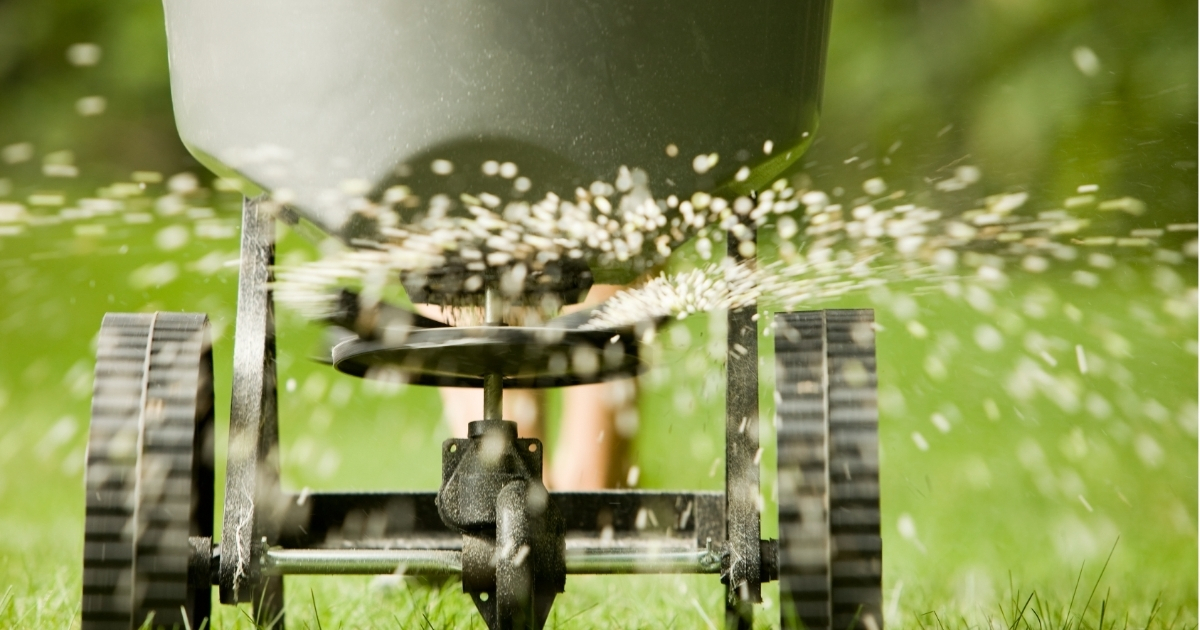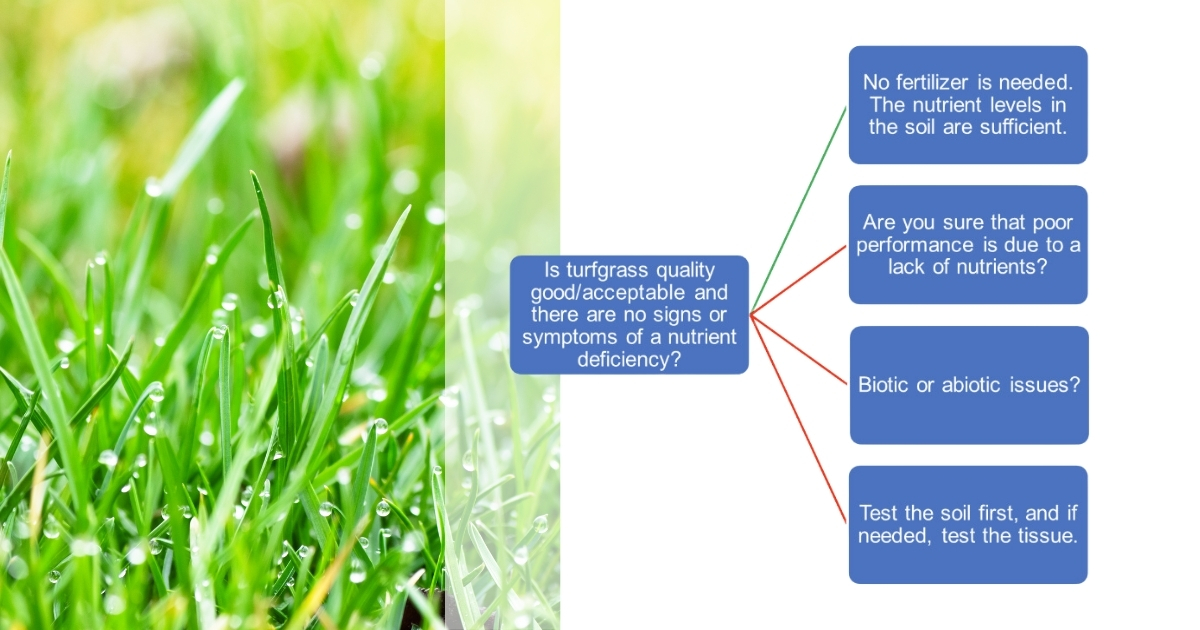
Category: Cooperative Extension

Turfgrass Nutrient Management - Debunking Some Common Myths
April 01, 2024 Written by John Emerson, Turfgrass Nutrient Management Agent
There are many myths and “wives tales” that are prevalent in the turfgrass industry, and I would like to take this opportunity to debunk a couple of them so that turfgrass managers can avoid wasted efforts and focus on more critical management issues. I am not exactly sure how these myths became ingrained in the industry, but nevertheless, they are present. Honestly, it is irrelevant as to why they are present, but what is important is the question, “How do we get rid of them?”. The answer is simple. The truth! The following list is by no means exhaustive, but hopefully, this piece will clear up some of the most common myths.
Myth #1: Phosphorus (P)
“I need to add phosphorus (P) anytime I am establishing turfgrass via seed, sod, or sprigs.”
If your soil test, which should be taken prior to establishment, says that there is enough phosphorus, then there is enough. Adding more will not be beneficial and may result in increased weed competition, negative environmental impacts, and wasted dollars.
There have been countless studies showing that where turfgrass has been established and the soil has been deemed to have sufficient P, adding more will not provide any benefit and will result in no significant difference in turfgrass quality 4 weeks after germination.
Myth #2: Potassium (K)
“Adding potassium (K) in the fall will increase the rooting and winter hardiness of turfgrasses.”
Again, if your soil test indicates that there is sufficient K, then adding more should be viewed as wasteful. Since K leaches easily, the soil can only hold a finite amount in the first place. There is sufficient research available that shows that excessive K applications can have a negative effect on turfgrass quality and promote disease outbreaks in several species of turfgrass. Furthermore, the turfgrass literature does not support the claim that potassium applications contribute to increased rooting mass, depth, or winter hardiness when applied at standard recommended rates.
Myth #3: Calcium (Ca)
“I need to apply calcium (Ca) because my soil test said I was low.”
In regards to Ca deficiencies in turfgrass systems, to my knowledge, I am not aware of any research, nor in practice, in which a true Ca deficiency has ever been identified except in hydroponic systems. In reality, Ca deficiencies are highly unlikely. Unfortunately, we do not have good soil testing calibration and correlation data for calcium sufficiency levels in turfgrass systems. We have relied on historic commodity crop calibrations for use in turfgrass systems leading us to recommend Ca applications when they aren’t necessary. The only time Ca applications may truly be warranted is when applying liming materials to raise soil pH or to combat sodicity issues with gypsum.
Myth #4: Lime
“I need to add lime every year.”
The reality is that turfgrasses perform well in a wide range of pH. Turfgrasses have ingenious ways of manipulating the pH of the soil within direct proximity to their roots in order to make minerals plant available. A good rule of thumb to follow is that as long as your pH is 5.5 to 7.5, nutrient levels are indicated as sufficient by your soil test, and the turf is viewed as acceptable, adding liming materials may be a wasted effort and will provide no improvement to the turf. You should also remember that it is really simple to raise pH with liming materials, but it can be quite difficult and costly to lower the pH when yearly applications have raised the pH to toxic levels.
Myth #5: Spring Fertilizer
“Spring fertilizer is necessary.”
Yes, and no. By law, we can apply fertilizer after February 15th, but that does not mean that this date is best for turfgrass uptake or environmental responsibility. Yes, some turfgrass stands may require fertilizer in the spring, but it is recommended to apply fertilizer when the grass is actively growing. In an average year in Delaware, around mid-to-late March, the cool-season grasses are expected to be actively growing. For warm-season grasses, this window is historically around mid-April to early May.

Myth #6: Sulfur (S)
“I need to apply sulfur (S) as a stand-alone fertilizer to my turf.”
While sulfur deficiencies can occur, you don’t necessarily need to apply S as an individual application. Many of our slow-release nitrogen products are coated with S and can supply the turf with sufficient S as a secondary benefit. The fertilizer materials I am referring to are known as sulfur-coated urea and will be labeled on fertilizer bags as “sulfur-coated urea (SCU)” or “polymer-coated sulfur-coated urea (PCSCU).” Another route to avoid applying S as a stand-alone fertilizer is to apply ammonium sulfate as your nitrogen (N) source. Ammonium sulfate contains both plant-available forms of N and S. If using ammonium sulfate, which is a water-soluble fast-release fertilizer, it should be watered in with no less than 0.10” of water immediately after application. If you don’t have supplemental irrigation, I recommend avoiding the use of ammonium sulfate.
My personal nutrient management philosophy for the turfgrass I manage is that I want only to apply fertilizer when there is a good reason to do so. I also want to ensure that as much of the applied nutrients make their way into the plant as possible. With that being said, I feel it is valid to assume that most native soils have higher nutrient-supplying power than what is historically believed. Yes, nutrient deficiencies can cause problems, but they are unjustly seen as a disastrous event that magically appears overnight and the next time you see the turf, it will be dead. In reality, this is not how nutrient deficiencies occur. The process of turfgrasses developing deficiency symptoms is a bit more gradual. You should have plenty of time to react to any turfgrass decline due to nutrient deficiencies as long as you see the turf regularly and you have an idea of what the current nutrient levels are in the soil. Nutrient deficiencies should be expected to disappear rapidly after a fertilizer application is made. For rapid elimination (24-48 hours) of a nutrient deficiency, liquid foliar applications will be best.
To be clear, I am not advocating for disregarding nutrient recommendations; I am simply trying to explain that the current standard recommendations tend to be much higher than what the turf actually needs to perform well. If you are more risk-averse, then I would recommend following the standard lab recommendations precisely. Personally, I am far more comfortable with letting the soil nutrient concentrations fall into the “low” category on my soil test before I consider applying fertilizer. I am confident that the true critical levels are below or at the bottom of the “low” category.
The chart below is the basic framework for how I approach fertilizing turfgrasses. A caveat to this chart is the element of nitrogen (N). Theoretically speaking, turfgrass is always N-deficient. What I mean by this is that anytime that you apply nitrogen you should expect to see some level of a plant response. A response will be evident by observing an improvement in turfgrass color and an increase in growth rate. The same cannot be assumed for all of the other nutrients required by the plant if soil levels are sufficient.
First, ask yourself the question, “Is the turf performing well?”. If the answer is “yes,” then adding more of any element (other than nitrogen) via fertilizer is going to be wasteful, and the probability of a turfgrass response or improvement of the turf is highly unlikely. If your answer is “no,” and the turf is performing poorly, you need to identify why the turf is unacceptable. Biotic factors, such as fungal pathogens, for example, and abiotic factors, such as heat and drought stress, can be quite detrimental to turfgrass stands and we should rule those out first. Fertilizing a stand of turfgrass that has been deemed to have sufficient levels of nutrients in the soil and is experiencing severe biotic or abiotic stress will often exacerbate the problem. Once we have ruled out biotic and abiotic factors, soil testing is going to be our next step. Follow any nutrient recommendations given by the lab in your analysis report. If the problem still exists after following the lab’s nutrient recommendations, you may need to submit a tissue/plant sample for analysis to understand better which element is deficient in the plant and why. Using the general logic in this chart will allow you to focus your attention on more important matters as opposed to worrying about a nutrient deficiency that may not exist.

